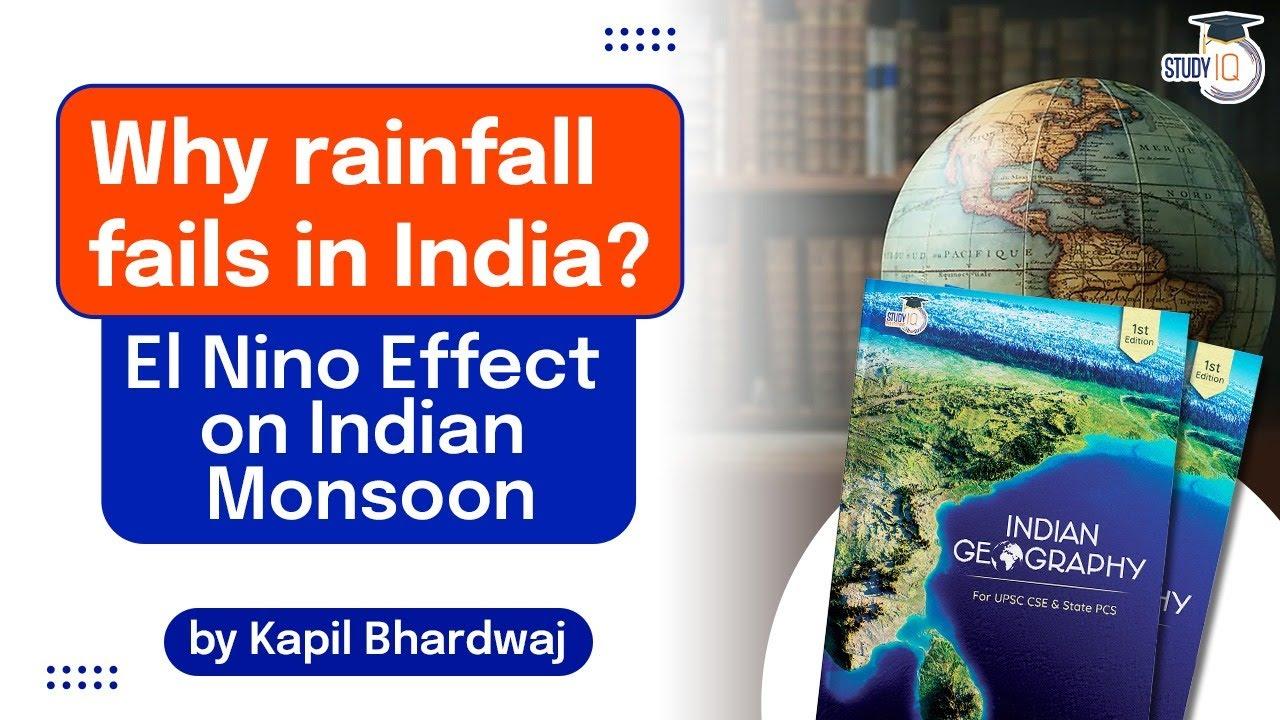Table of Contents
El-Nino and Indian Monsoon
- El-Nino occurs due to the change in the normal patterns of trade wind circulation.
- It is unusual warming of sea surface temperature of central and eastern pacific resulting in heavy rainfall in eastern pacific and drought in Australia and South East Asia.
- Normally these winds move westward while driving the warm surface water towards the east coast of Australia in the Western Pacific.
- El-Nino events are the result of weakening Easterly Trade winds.

- The weakening of easterly trade winds allows warmer water from the western Pacific to surge eastwards and replace the cold Peruvian currents.
- There is drought in Australia and rainfall occurs in Peru and Ecuador region.
Consequences of El-Nino
- Increased rainfall across the southern part of the USA and in Peru,
- Drought in the West Pacific, sometime El-Nino is associated with devastating fires in Australia.
- Drought in India and parts of eastern Africa and mild winters in western Canada.
- El-Nino conditions tend to suppress the development of tropical storms and hurricanes in the Atlantic but increase the number of tropical storms over the eastern and central Pacific oceans.
La-Nina and Indian Monsoon
- La-Nina refers to the “Girl Child”.
- Unusual cooling takes place in the central and eastern Pacific in contrast to EL Nino’s unusual warming.
- Together La-Nina and El-Nino are the cold and warm phases of the ENSO or El-Nino Southern Oscillation.
Indian Geography (Fundamental) | Free PDF






















 WhatsApp
WhatsApp